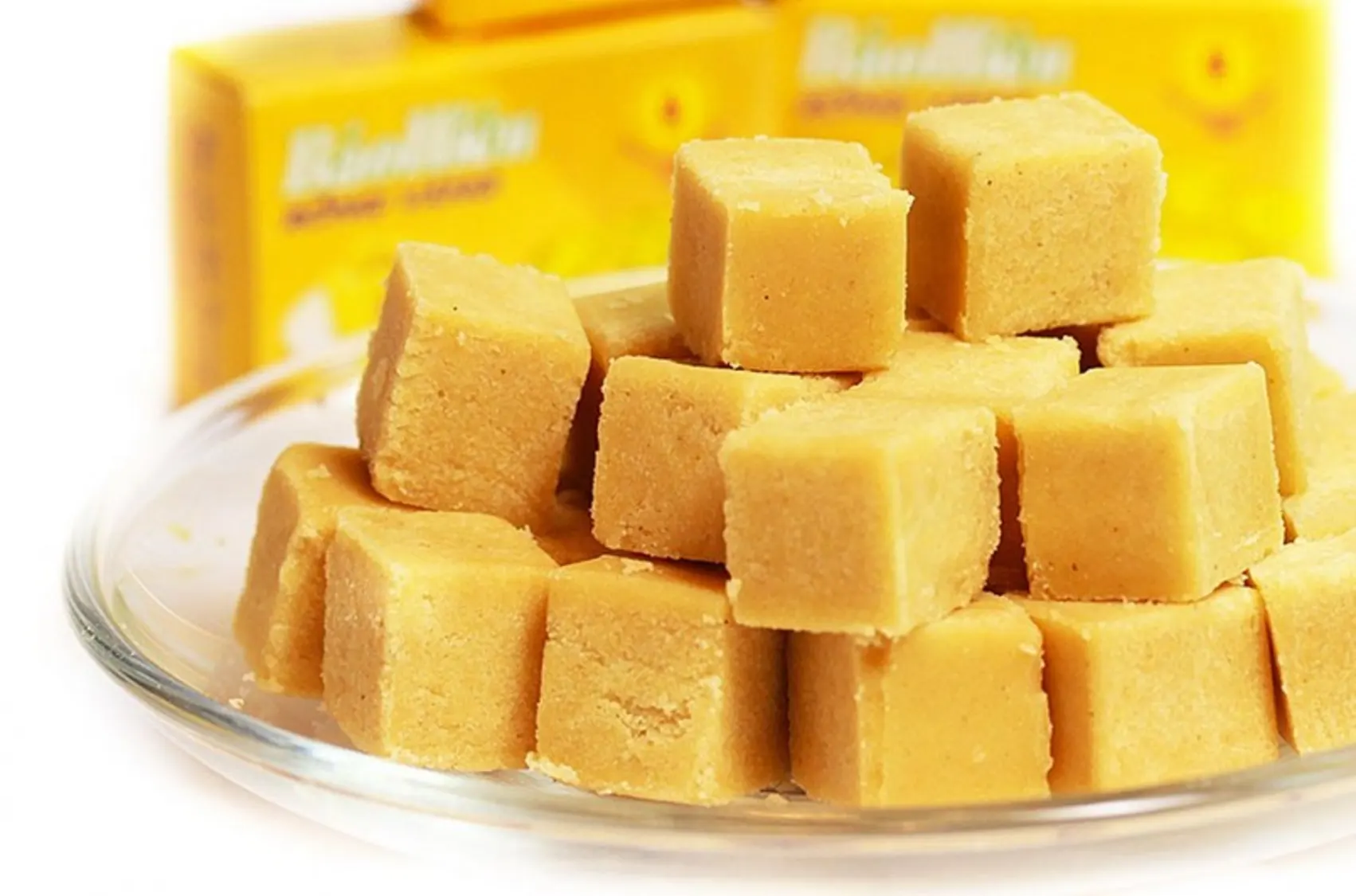
Banh Dau Xanh
Mung bean cakes.
Ingredients
- •Mung beans
- •Sugar
- •Oil
- •Salt
- •Vanilla
Instructions
Cook Beans
Prepare mung bean paste
Shape
Form and bake cakes
Bánh Đậu Xanh, or Vietnamese Mung Bean Cakes, are delicate, melt-in-your-mouth pastries that showcase the subtle sweetness of mung beans. These small, rectangular cakes have a distinctive pale green color and a crumbly texture that makes them a beloved traditional Vietnamese confection.
These cakes originated in Hai Duong province, where they became famous during the early 20th century. The city remains renowned for producing the finest Bánh Đậu Xanh, with many families preserving generations-old recipes and techniques.
The creation of these cakes is a meticulous process that begins with selecting high-quality peeled mung beans. The beans are carefully cooked, mashed, and combined with sugar, oil, and a touch of vanilla for fragrance. The mixture is then pressed into molds and baked until achieving the perfect balance of firmness and tenderness. The most skilled artisans can produce cakes that are neither too dry nor too moist, with a texture that dissolves gracefully on the tongue.
While the traditional recipe remains most popular, modern variations might include additions like coconut, pandan essence, or even durian flavor. Some artisans create premium versions using high-grade coconut oil or adding dried fruit pieces for extra texture and taste.
In Vietnam, Bánh Đậu Xanh is often enjoyed with tea and is a popular gift during holidays, especially Tết (Lunar New Year). The cakes are typically packaged in decorative boxes, making them a thoughtful present for family visits or business meetings. They're also a common souvenir item, representing the culinary heritage of Hai Duong province.
From a nutritional perspective, these cakes offer some benefits from the mung beans, which are rich in protein and fiber. However, they should be enjoyed in moderation due to their sugar and oil content. The cakes are naturally gluten-free, making them suitable for those with gluten sensitivities. They can be stored at room temperature for several weeks when properly packaged, though they're best consumed within two weeks of production for optimal texture and flavor.
